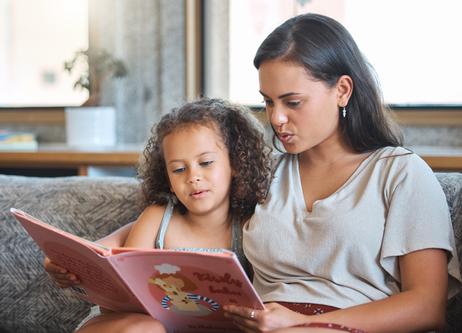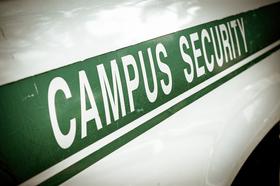The Evolution of Early Reading Strategies for Children
Early reading has always been a cornerstone of child development, forming the foundation of lifelong learning and comprehension.
- How we teach children to read has seen significant shifts over the centuries, reflecting changes in education theory, societal values, and technology.
- This article will explore these changes, offering insights into the past, present, and future of early reading strategies for children.
- To understand how we teach reading in the 21st century, let's look at how they taught reading in Roman times and the Middle Ages.
Canva generated this picture of a child reading.

During Roman times
In ancient Rome, the education system was quite different from what we know today.
- However, reading was an essential skill, especially for those belonging to higher social classes.
- Learning to read, write, and do arithmetic was a fundamental part of a Roman child's upbringing.
Here's how children were generally taught to read during Roman times.
- Roman education often began at home, especially for the elite, with either the father or a private tutor providing instruction.
- However, there were also rudimentary forms of schools known as "ludus litterarius," which children from a broader range of social backgrounds could attend.
- That's how the formal education for many Roman children began, focusing on reading, writing, and arithmetic.
- While it was rudimentary compared to modern standards, it laid the foundational skills for higher levels of Roman education.
The Romans taught reading and writing concurrently.
- Students learned the alphabet first.
- It was usually written on a wax tablet that could be smoothed for reuse.
- The Roman alphabet letters would be etched into the wax with a stylus, allowing reading and writing exercises.
- After mastering the basics of the alphabet, students moved on to syllables and then simple sentences.
- The texts used in these exercises were often moral sayings, proverbs, or lines of poetry.
- These were typically read out loud, as reading during this time was often an auditory and visual exercise.
- Advanced students delved into grammar, studying the intricacies of Latin, the language of ancient Rome.
After mastering basic reading, children often read from significant works, such as those by Virgil, Cicero, and other classical authors, to improve their language skills and imbibe moral and civic virtues.
- The primary technologies used in education during this period were the wax tablet, the stylus for writing, and scrolls or codices for reading.
- Papyrus scrolls were common, although more permanent works were written on parchment.
- The ability to read was closely tied to social class.
- While children of senators and merchants would have received a comprehensive education that included reading, children of poorer families had different opportunities.
In summary, teaching reading in Roman times was a tailored process, beginning with the alphabet and progressing through increasingly complex texts. The focus was not just on the mechanics of reading but also on the content, serving both educational and moral purposes.
This video offers a look at education in Roman times.
During The Middle Ages
The approach to teaching reading during the Middle Ages differed significantly from the Roman era, influenced mainly by the socio-political context and the Church's prominent role. Here's how they taught reading during this period.
- In the early Middle Ages, monasteries were often the primary education centers.
- Monastic schools were established to educate future monks and clerics, and later, cathedral schools emerged to expand the circle of education to those who were going to serve in various capacities within the Church.
- By the later Middle Ages, the advent of universities and some local schools expanded educational opportunities, though literacy remained relatively low among the general population.
Learning in the Middle Ages was heavily influenced by religious texts.
- The Latin alphabet was taught first, often using religious texts like psalters, prayer books, or even the Bible as the basis for learning to read.
- The teaching method was largely rote memorization and oral repetition, given that books were scarce and expensive.
- Hand-copied manuscripts, usually written on parchment, were the primary reading materials.
- These were costly and labor-intensive to produce, which limited access.
- Students often learned by listening to a teacher read and then reciting what they heard.
- For practice, some schools used "hornbooks," which were paddles with a sheet of parchment displaying the alphabet, syllables, or religious texts, often protected by a thin layer of horn.
Latin heavily influenced the study of grammar, the language of the Church, and scholarly study.
- Those who advanced beyond basic literacy were usually students destined for Church, law, or governance roles.
- They would go on to read Latin classics and Christian texts, often commenting on or interpreting these works.
The invention of the printing press in the 15th century started to change the landscape of education and reading, making books more accessible and less expensive. However, this technology's impact was more fully realized during the Renaissance than in the Middle Ages.
- Education and literacy were generally restricted to the elite and the clergy.
- Women, peasants, and serfs rarely had the opportunity to learn to read, although there were exceptions, particularly among noble families or within convents.
In summary, reading education in the Middle Ages was closely tied to religious institutions and was often based on religious texts.
- It was primarily an oral practice based on rote memorization and repetition, focusing heavily on Latin.
- The scarcity and cost of books meant that literacy remained a privilege of the elite and the clergy until the advent of the printing press began to democratize reading.
This video looks at education in the Middle Ages.
17th Century: The Hornbook
The Hornbook was a paddle-shaped wooden tool that introduced children to the alphabet and basic syllables. A sheet of parchment or paper containing letters and prayers was a standard tool for centuries, symbolizing the rudimentary educational approach of the time.
18th Century: The New England Primer
The New England Primer marked a shift towards textbooks that integrated moral and religious texts. With rhymes and illustrations, it offered a more structured way to learn, influencing generations of American children.
19th Century: McGuffey's Readers
McGuffey's Eclectic Readers further diversified reading material with graded content that matched children's developmental stages. They introduced engaging narratives and lessons that are considered forerunners of modern textbooks.
20th Century: Phonics and Whole Language Approach
The 20th century saw a passionate debate between phonics and the whole language approach.
Phonics emphasized sounding out words, while the whole language approach promoted recognizing words as entire units. Television programs such as Sesame Street harnessed multimedia, making learning interactive and fun.
Late 20th to Early 21st Century: Technology and Early Reading
Computers and the internet ushered in a new era, with apps and online resources like interactive eBooks and games enhancing the reading experience and catering to various learning styles.
Section II: Modern Approaches to Early Reading
Multisensory Approaches
Today's educators use visual, auditory, and kinesthetic methods to teach reading. Children engage with letters through sight, sound, and touch, enhancing retention and comprehension.
Personalized Learning
Modern tools enable tailoring reading strategies to individual needs, recognizing that every child's learning journey is unique.
Parental Involvement
Parents are encouraged to participate, fostering a love for reading that transcends the classroom.
Digital Tools and Apps
Apps like ABCmouse and Reading Rainbow represent a growing trend in using technology to create engaging and personalized reading experiences.
Conclusion
Early reading strategies have continually evolved from alphabets to apps, reflecting broader educational, societal, and technological shifts. As we look to the future, integrating traditional and modern approaches offers exciting possibilities for nurturing literate, curious, and engaged minds.
Questions? Contact us on Facebook, Instagram, and YouTube. @privateschoolreview
#EarlyReading #LiteracyEvolution #ChildDevelopment #EducationHistory #ReadingStrategies
























